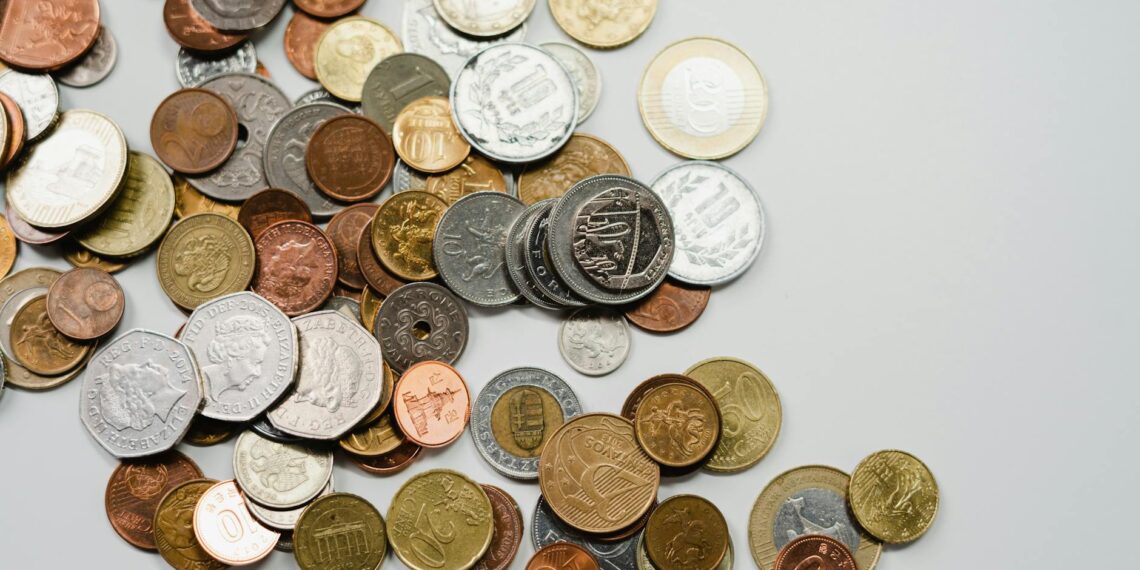The Coin Change Problem is a well-known combinatorial optimization problem that asks for the minimum number of coins needed to make a specific change amount using a given set of coin denominations . It’s a classic problem in computer science and mathematics, often used to teach and illustrate concepts like dynamic programming.
Here’s a breakdown of the Coin Change Problem:
You are given an array coins representing the available coin denominations (e.g., [1, 2, 5] for cents) and an integer amount representing the total sum you want to make. The goal is to return the fewest number of coins that can sum up to that amount . You can assume you have an unlimited supply of each coin denomination. If the amount cannot be made up by any combination of the coins, you should return -1. A special case is when the amount is zero, in which case the answer is zero coins.
- Example 1:
– coins = [1, 2, 5], amount = 11
– Output: 3 (Explanation: 11 = 5 + 5 + 1)
- Example 2:
– coins = [2], amount = 3
– Output: -1 (Explanation: You cannot make 3 with only 2-denomination coins)
- Example 3:
– coins = [1], amount = 0
– Output: 0 (Explanation: No coins are needed to make 0)
Two main approaches are commonly used to solve the Coin Change Problem:
a) Dynamic programming
This is the most efficient and guaranteed method for finding the optimal solution. It involves creating an array (or table) to store the minimum number of coins required for each amount from 0 up to the target amount.
- How it works:
– Initialize an array dp of size amount + 1 where dp[i] represents the minimum coins needed for amount i.
– Set dp[0] = 0 (zero coins needed for zero amount) and the remaining elements of dp to a large value (representing infinity).
– Iterate from i = 1 to amount.
– For each i , iterate through each coin denomination.
– If i - coin is non-negative (meaning the coin can be used), update dp[i] with the minimum of its current value and dp[i - coin] + 1.
– Finally, dp[amount] will contain the minimum number of coins needed or a large value if impossible.
- Time Complexity: O(
amount*n), wherenis the number of coin denominations. - Space Complexity: O(
amount).
b) Greedy algorithm (not always optimal)
A greedy approach attempts to solve the problem by making locally optimal choices at each step, hoping it will lead to a globally optimal solution. For the Coin Change Problem, this typically means choosing the largest denomination coin that doesn’t exceed the remaining amount.
- Limitations: The greedy algorithm does not guarantee the optimal solution for all sets of coin denominations , though efficient in some cases (e.g., standard US currency).
– Example: With denominations {1, 3, 4} and an amount of 6, the greedy approach selects {4, 1, 1} (3 coins), while the optimal solution is {3, 3} (2 coins).
- The problem exhibits overlapping subproblems (the same subproblems are solved repeatedly) and optimal substructure (the optimal solution to the problem can be built from optimal solutions of subproblems). These characteristics make dynamic programming an ideal and efficient approach for the Coin Change Problem.
- Dynamic programming systematically explores all possibilities and memoizes (stores) the results of subproblems to avoid redundant calculations, ensuring an optimal solution.
The Coin Change problem has practical applications beyond its traditional context in various fields, including:
- Financial Transactions: Optimizing change-making processes in cash registers, vending machines, and ATMs.
- Resource Allocation: Efficiently allocating resources like memory or bandwidth in computer systems or networks.
- Portfolio Optimization: In finance, minimizing transaction costs in investment portfolios.
- Algorithm Design and Data Structures: Serving as a foundational problem to teach and understand dynamic programming and optimization techniques, [according to upGrad].
The Coin Change problem is a valuable exercise for understanding and applying dynamic programming techniques to solve real-world optimization challenges.









What is the coin change problem?
The reason this is known as the coin changing problem is that the original premise is that the total n is the amount of change being given for a purchase and the question was about how this can be done.
Is coin change problem NP hard?
Great question! The coin change problem is known to be weakly NP-hard [GJ79, Lue75] and equiva- lent to the Unbounded Knapsack problem, a variant of the well-known NP-complete 0-1 Knapsack problem.
Is coin change a problem greedy?
I can help with that. The Coin Change problem, also known as the Change-Making problem, is a well-studied combinatorial optimization problem, which involves minimizing the number of coins needed to make a specific change amount using a given set of coin denominations. A natural and intuitive approach to this problem is the greedy algorithm.
Is coin change knapsack problem?
The coin change can be seen as a special case of the unbounded knapsack problem, sharing the following similarities and differences. The two problems can be converted into each other: “item” corresponds to “coin”, “item weight” corresponds to “coin denomination”, and “backpack capacity” corresponds to “target amount”.